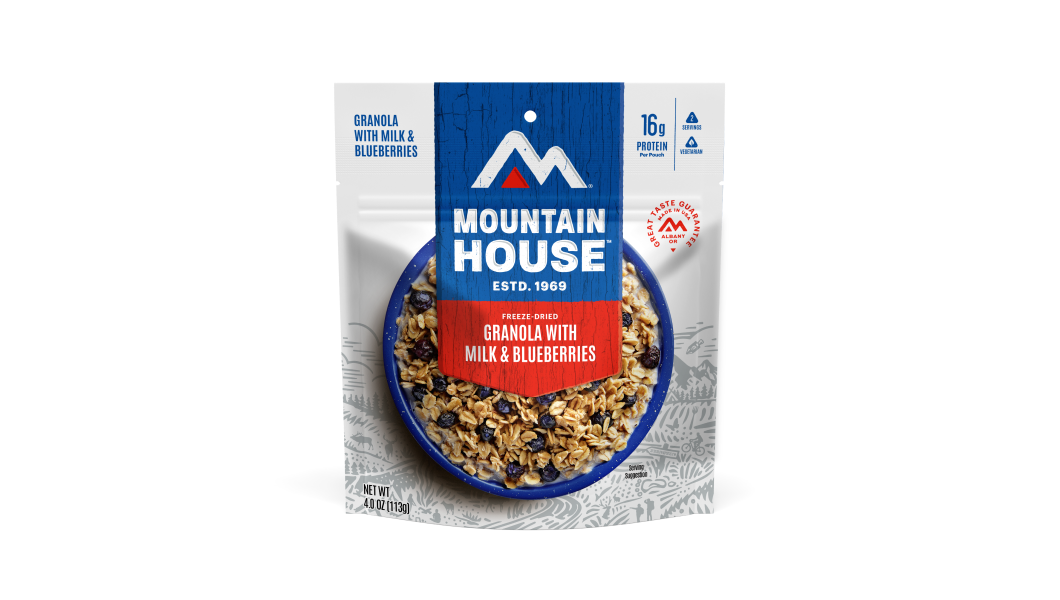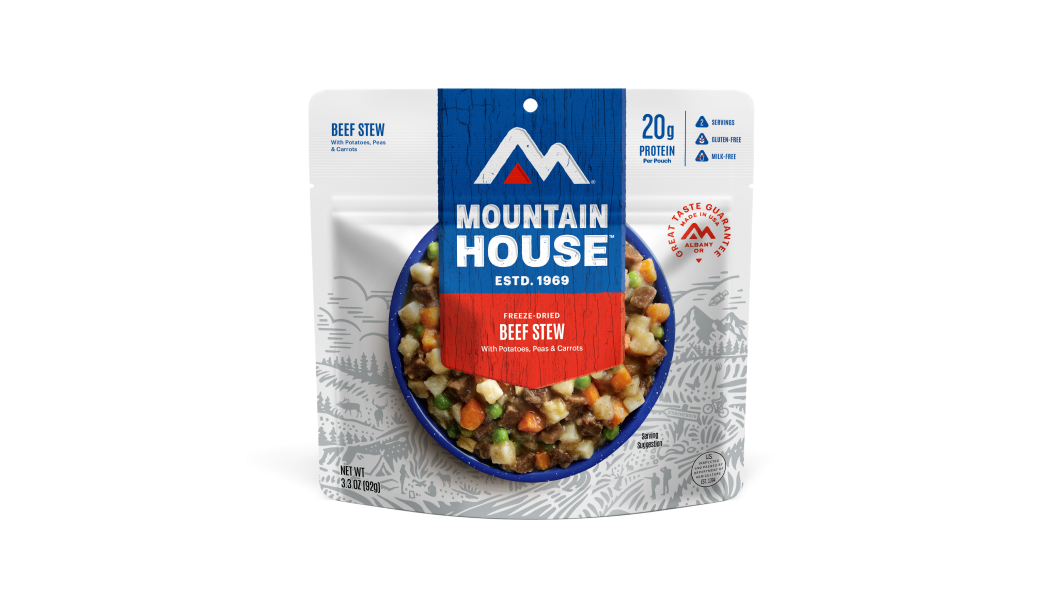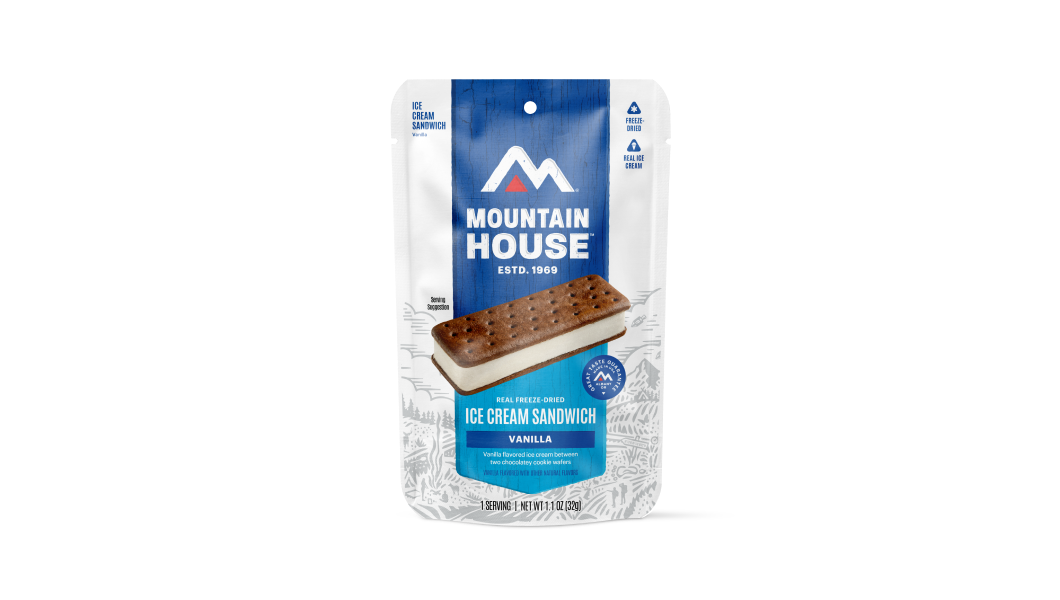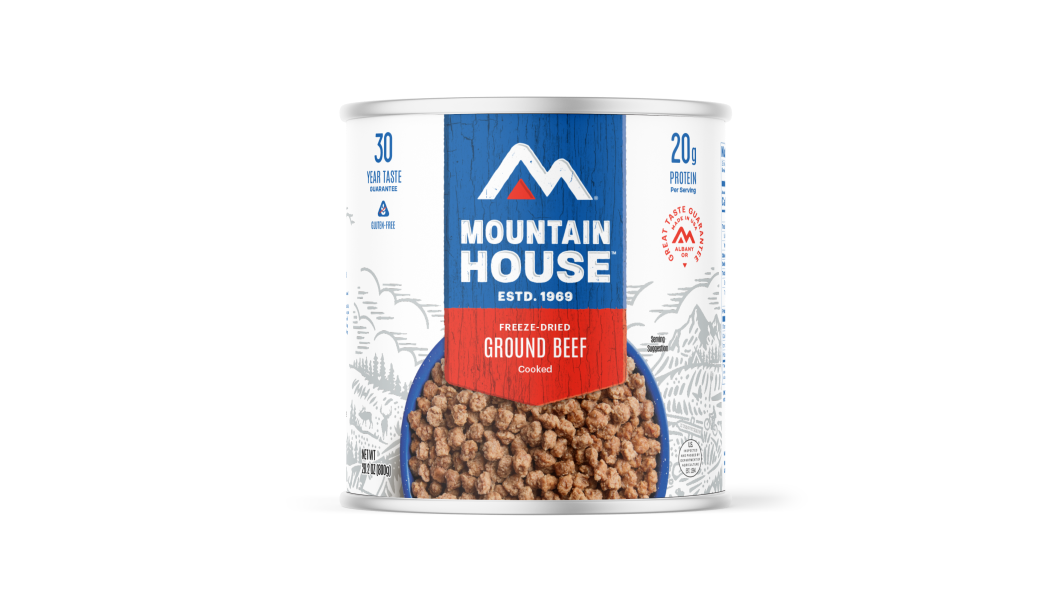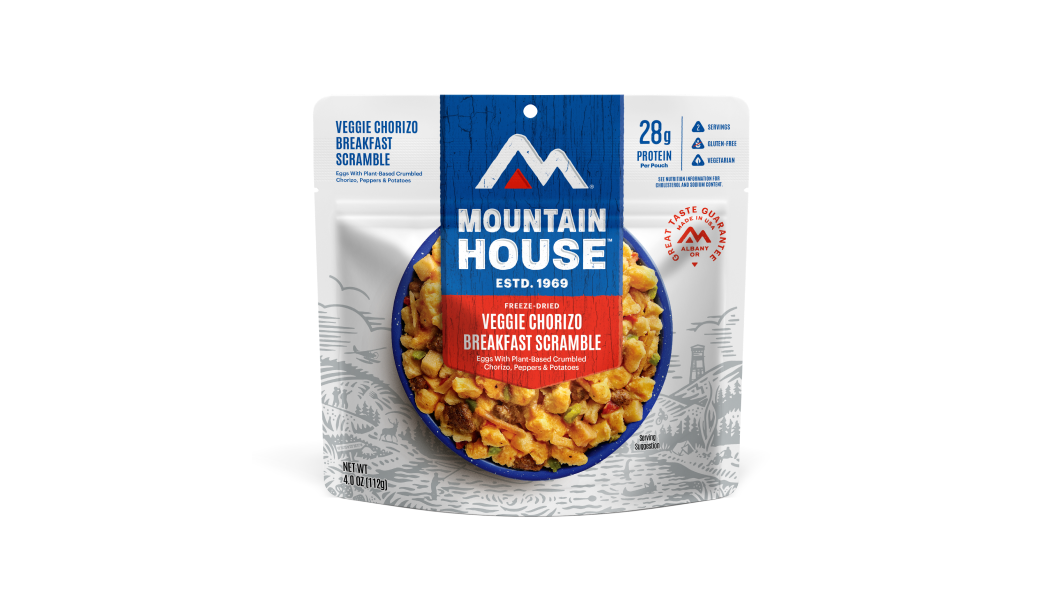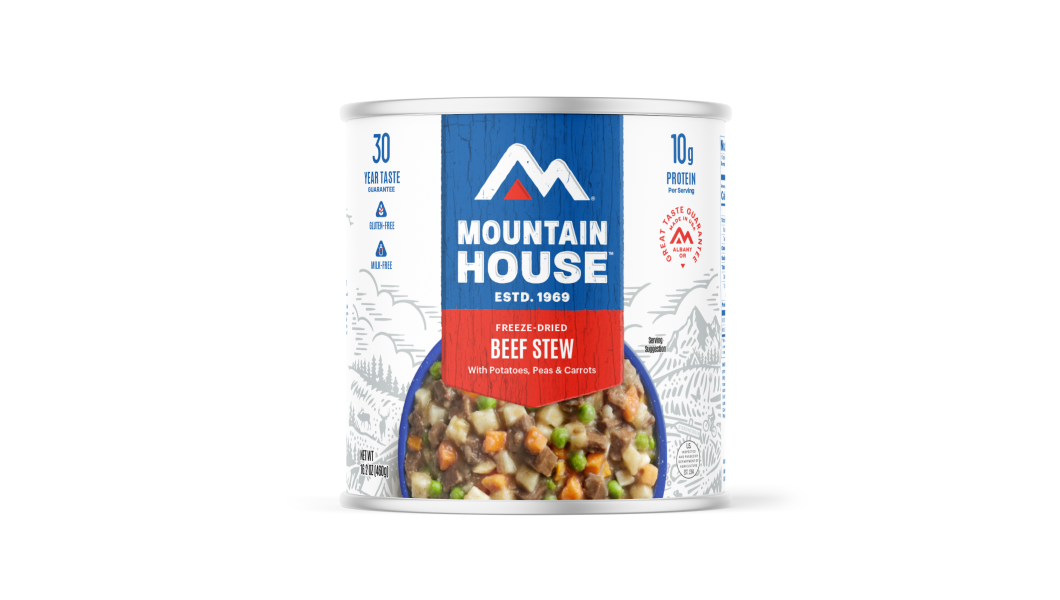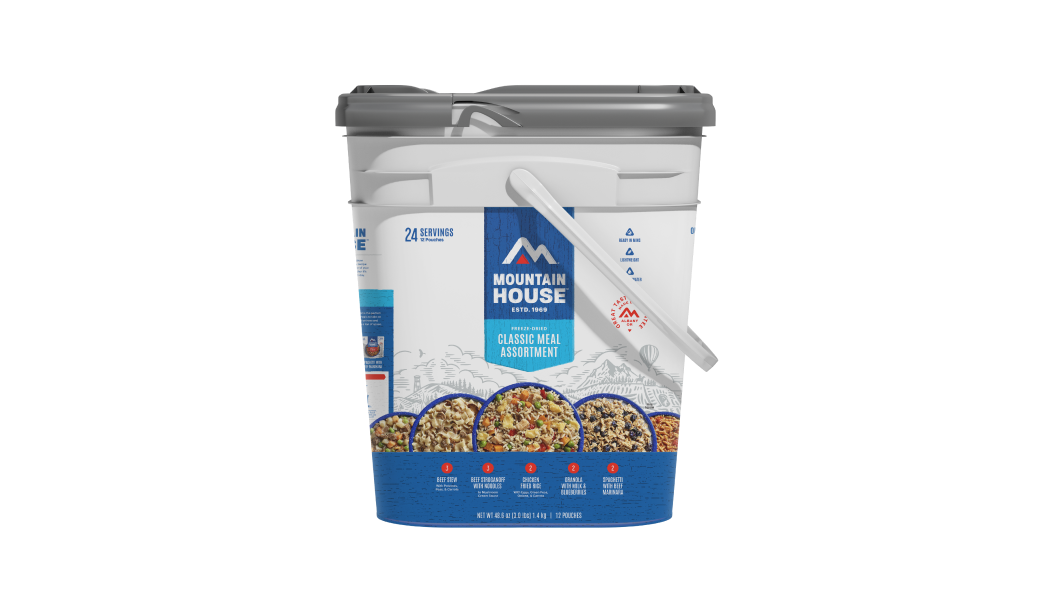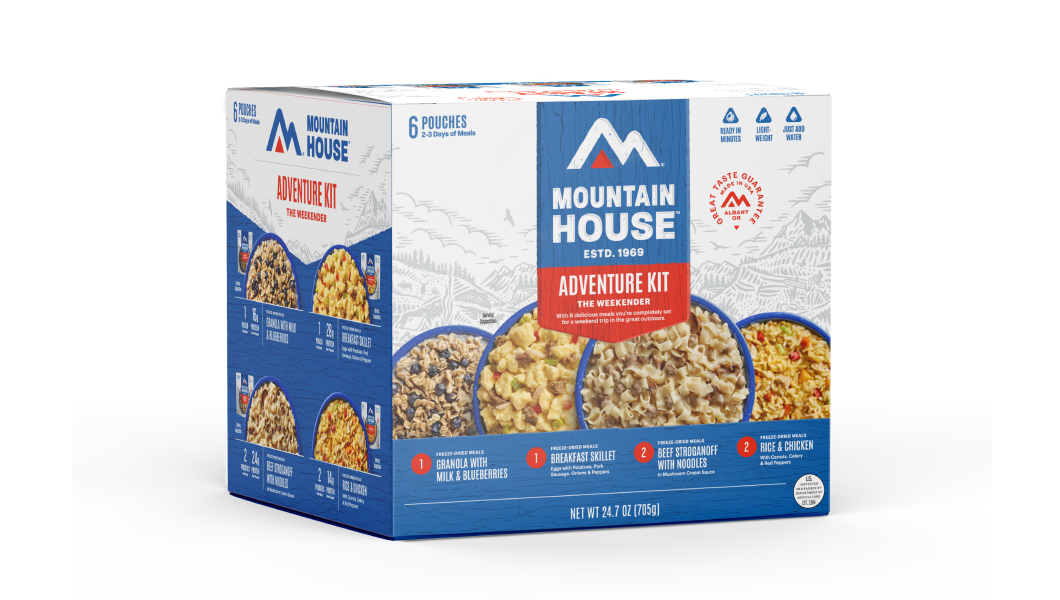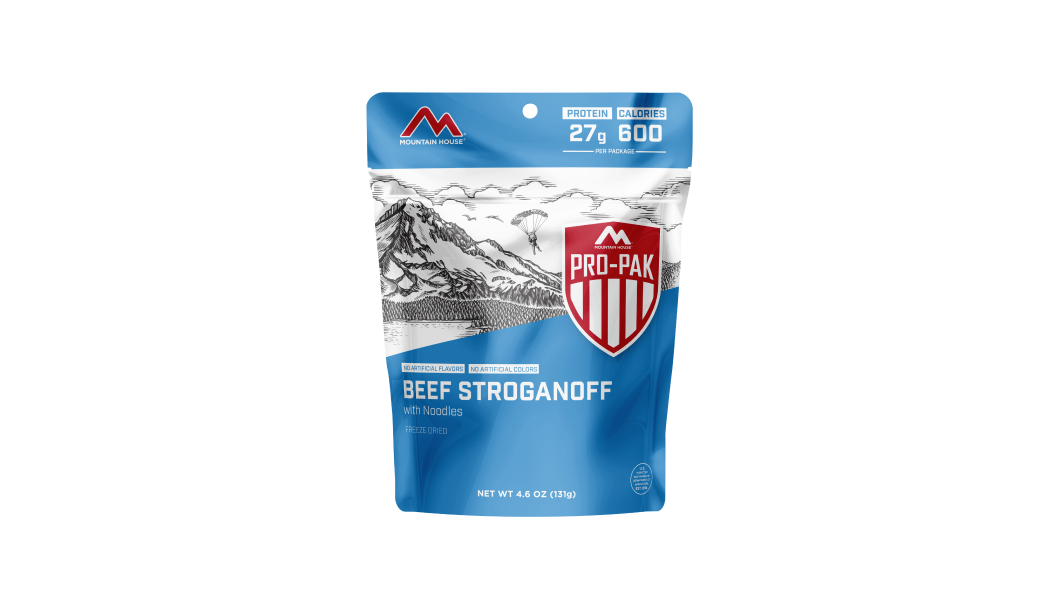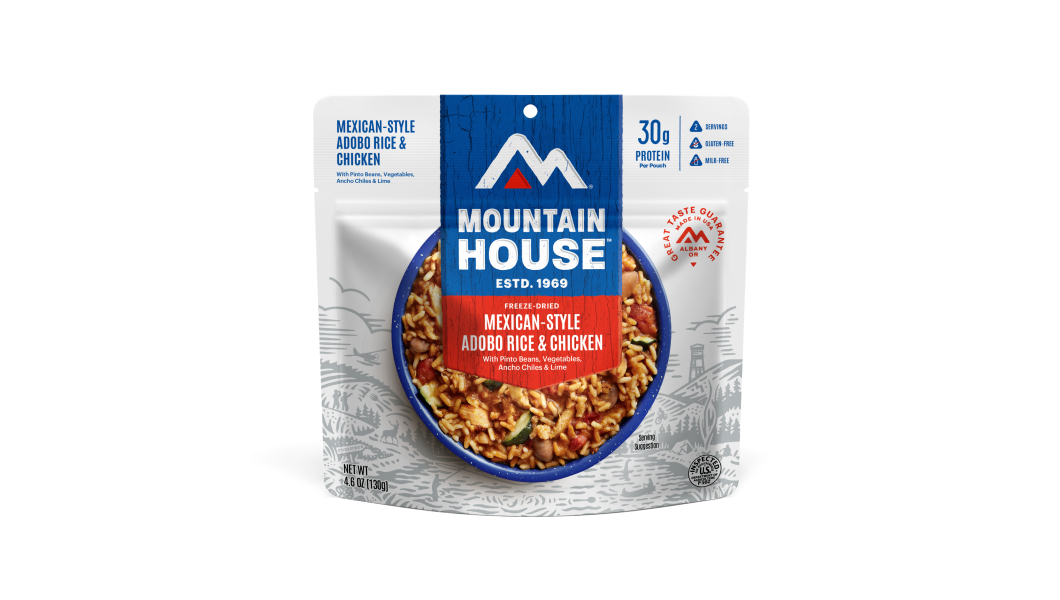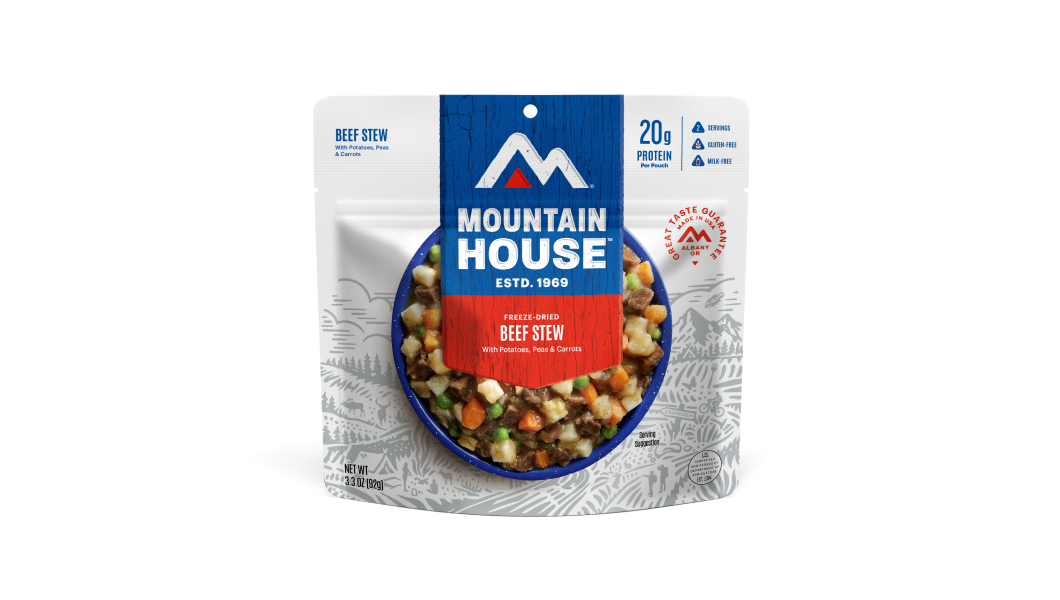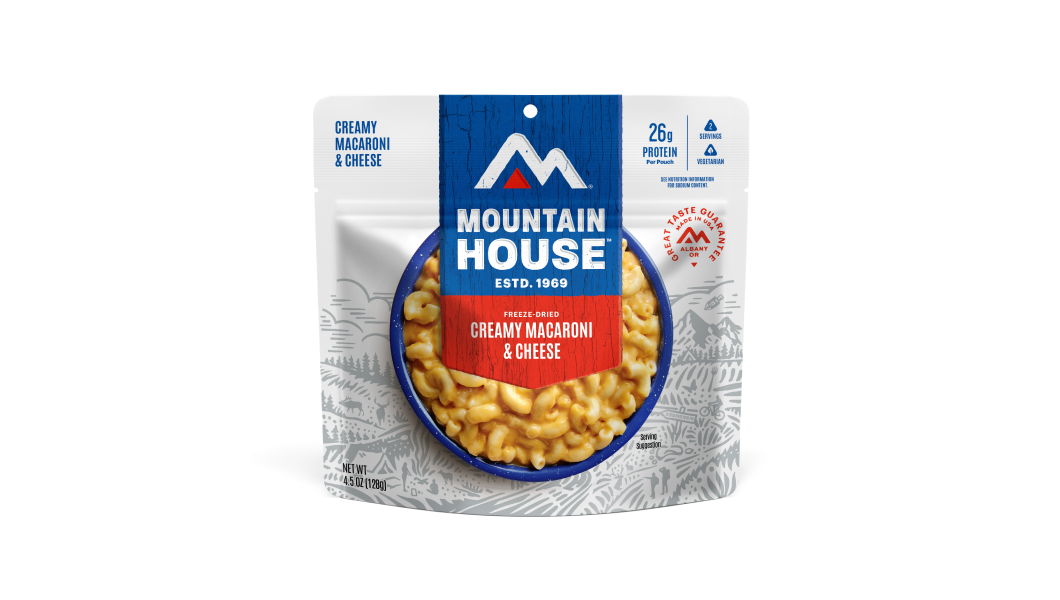Inspired for an Adventure? Check out Beef Stroganoff - Pouch and Beef Stew - Pouch
Free Ground Shipping On All Orders
Over 2,100 Reviews
Add description, images, menus and links to your mega menu
A column with no settings can be used as a spacer
Link to your collections, sales and even external links
Add up to five columns
Add description, images, menus and links to your mega menu
A column with no settings can be used as a spacer
Link to your collections, sales and even external links
Add up to five columns


Part of the basis of self-sufficiency and disaster preparedness is stockpiling food for emergency storage. Having adequate provisions on hand to weather power outages, storms, or floods, and other disaster situations is essential. But more than a few folks don’t really know how to store emergency food correctly, which puts those survival supplies at risk and can translate to wasted money and space.
The problem goes beyond emergency food supplies: The U.S. Department of Agriculture estimates that 30 to 40 percent of food in the U.S. ends up wasted, and some of that comes down to households simply being unfamiliar with proper food-storage principles and confused about what expiration dates actually mean.
Food rotation is one of the biggest questions in long-term emergency storage. Following a few simple rules can help extend shelf life, keep provisions fresh, and cut down on spoilage.
Why Expiration Dates & Rotation Matter
Expiration dates are certainly helpful information, but it’s also all too easy to misunderstand or overly rely upon them.
Aside from infant formula, a lot of the expiration dates you see on packaged foods in the U.S. don’t actually imply when the goods actually expire—that is, become unsafe to eat. More typically, you’ll see “sell-by” dates, which inform grocers when to take products off display, and “use-by” dates, which suggest the window of optimal freshness, flavor, and texture. Many kinds of foods can be safely consumed beyond sell-by and use-by dates, so long as they’re properly stored and inspected.
And, conversely, a food item not yet at its use-by or other expiration date could be unsafe to consume if it hasn’t been handled and maintained in the right conditions or checked properly.
So, while the dates on the food labels are important to consult, they should be cross-referenced against a general understanding of the shelf life of different foods—which vary widely across such categories as canned and dry goods, freeze-dried meals, and highly perishable items such as raw meat—as well as the manner in which your supplies are being stored. Rotating food in your stored supply allows you to use older or soon-to-expire provisions first and adequately restock as needed. You’ll lessen the chances of food spoiling and having to be thrown out, and you’ll also be more confident that your long-term emergency food supply is actually reliable: Neglecting food rotation and regular inspection can mean your prepper food stockpile looks full, but actually contains a decent proportion of spoiled and otherwise unsafe/unusable products.
Recommended Food Rotation Method: FIFO
Experienced preppers and retailers alike are probably familiar with the acronym FIFO, which means “First In, First Out.” It applies as much to a household emergency kit, pantry, or refrigerator as the shelves of a grocery store.
The FIFO method to stock food and rotate it simply means using older items first, and storing newer items behind them to create a common-sense, front-to-back rotation. It means you capitalize on the full shelf life of different food products and avoid allowing forgotten, tucked-away provisions to sit around and spoil.
Setting Up Your Storage for FIFO Success
In many cases, it makes sense to transfer certain foods from their original packaging to a different container to prolong shelf life and protect against pests, dampness/water, and the like. Airtight containers or vacuum-sealed packaging are ideal for dry goods. When you do so, be sure to label the new container with the purchase and use-by dates with a permanent marker—and favor large, clear numbers and letters to enhance legibility.
Keep your storage area (which should be as dark, cool, and dry as possible) well-organized, with shelving or bins for dry storage and a fridge, freezer, and/or coolers for perishables. When arranging items on shelves, bins, or other containers, place heavier products at the bottom and lighter ones on top—a way not only to reduce the chance of breakage or other damage if something falls, but also to make it easier for household members to safely access supplies.
Mountain House kits are great for emergency food storage on account of their easy packability and outstanding 30-year taste guarantee. Since they’re already packaged for long-term storage, there’s no need to transfer them to a different container.
How to Implement Your Emergency Food Rotation Strategy
Here are some nuts-and-bolts tips for emergency food preparation, storage, and rotation that’ll help you manage your prepper supplies.
- Inventory Your Emergency Food Supply - Taking the time to make and maintain an inventory checklist for your emergency food supply really pays off. List types of food, expiration dates, and quantities, and inspect periodically (say, every few weeks to every few months) to update as needed. It’s also a really good idea to tape such an inventory to the outside of your refrigerator and freezer, as this will help you minimize the amount of time the door is opened for rummaging around—especially important if you’re dealing with a power outage and trying to prolong the usable condition of refrigerated and frozen foods as long as possible.
- Organize Your Storage Areas - Store similar items together so that your emergency provisions are logically and efficiently arranged, with canned foods, dry storage, freeze-dried, dehydrated, and perishable products grouped. Be sure to keep any allergens and raw poultry separate in food-safe containers.
- Establish a Rotation Schedule - Check your food stores every few months for expiration dates and any signs of spoilage or damage, including bulging, leaking, or rusted cans and compromised jar lids. Stock newly acquired food in the back or rotate out older products. Eat or cook and freeze perishables first.
- Incorporate Emergency Food Into Daily Meals - The FIFO method means you’ll rotate out old/about-to-expire foods into your pantry or kitchen for use in everyday meals, replacing them with fresher stock for your emergency supply.
- Document & Track Everything - Keep a log or spreadsheet covering your emergency food stores, including purchase and expiration dates, expected shelf life, and rotation schedules. Make sure everybody in the household understands the system and follows it the same way.
Beyond FIFO: Other Practical Food Rotation Methods
There are other, related ways to rotate through your emergency food supply. The FEFO (“First Expired, First Out”) method, for example, is an alternative to FIFO that sees you prioritize those food items with the closest use-by dates, particularly perishables. In reality, some combination of FIFO and FEFO—a hybrid approach—tends to be the most effective strategy for long-term food storage.
You might additionally follow some version of category rotation: rotating by type of food (dry goods, canned food, refrigerated items, freeze-dried meals, etc.).
Tips for Long-Term Food Safety & Storage
As mentioned, maintain your emergency food stores in a cool, dry, and dark area, and use airtight containers or vacuum-sealed bags to protect dry goods. Remember to regularly inspect your canned goods for bulging, leaking, dents, or rust, and discard any that show such signs. Otherwise, while canned goods are often best in terms of flavor when used within a year, properly stored products can often last several years. (That said, higher-acid canned goods such as tomatoes should be used within a year or a year and a half.).
Use a fridge or freezer to store perishable items, but don’t overcrowd the shelves, which can impede the necessary air circulation. If perishable items stored outside a fridge or freezer are getting close to their expiration date, you should either consume them or cook them up and then put them in cold storage.

Add Mountain House Meals to Your Emergency Stockpile
For everyone from hardcore preppers to families looking to bolster their resilience in the event of an emergency, Mountain House meals make food rotation simple and straightforward! With an outstanding shelf life, lightweight packaging, and couldn’t-be-easier or quicker preparation, our freeze-dried meals are just as tailor-made for an emergency food stockpile as your camping kit. Importantly, they’re also not only nutritious and energy-rich, but downright delicious—and great, comforting flavors are very much recommended even for your disaster provisions.
Browse our entire collection of emergency and long-term food storage options today.

The First 72 Is on You: Survival Kit Checklist + Printable PDF

How to Cook in the Wilderness: Methods to Learn


Stay Hungry for Adventure
Sign Up for Delicious Outdoor Meals & Exclusive Offers!
By clicking ‘Join Now’, I agree to the Terms of Service and Privacy Policy.


Join the adventure
©2025 Mountain House — All Rights Reserved.
Your Cart is Empty
Continue ShoppingYour Cart
Subtotal
$0.00
EXPRESS PAYMENT METHODS AVAILABLE IN CHECKOUT
Taxes and Shipping Calculated at Checkout
Your ExpertVoice deal.
$[Deal Price]
$[Original Price]
Discount applied at checkout.
On sale now — lower than your ExpertVoice discount.
Not eligible for ExpertVoice discount.
